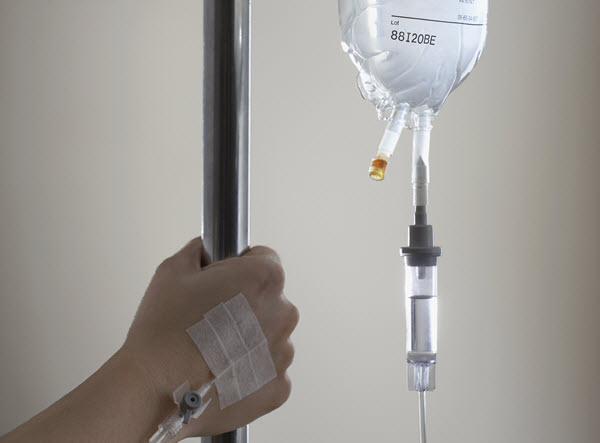Parenteral fluid administration is a basic part of medical management in healthcare. It is used in supportive, therapeutic, symptomatic, and palliative treatment of patients. Nurses are responsible in starting and maintaining parenteral lines according to a doctor’s prescription.
Why Is Parenteral Fluid Administration Important?

There are varied reasons why a parenteral IV supplementation is needed:
- Hydration – This is the most common reason why an IV line is needed for a patient. Cases of severe fluid losses such as persistent vomiting, diarrhea, and diuresis require immediate fluid replacement. Patients who cannot tolerate oral fluid replacements are best managed with IV hydration.
- Intravenous access – It is best to administer medications through IV when a rapid therapeutic action is needed such as in emergency life-threatening situations. The same is true for patients who are unable or restricted to take oral preparations.
- Blood and electrolyte replacement – A patent intravenous line is critical in cases of blood loss and electrolyte depletion. Blood transfusion is only compatible with a Normal Saline Solution (NSS) IV line. Electrolytes administered intravenously is a rapid way of replacing electrolyte losses in the body.
See Also: How to Perform IV Insertion on Pediatric Patients
Understanding Movement of Fluids
Did you know that 60% of the body is comprised of water? 40% of that is intracellular fluid (within the cells) and 20% is extracellular fluid (outside the cells). 15% of the extracellular fluid is within the tissues (interstitial) and 5% is within the circulation (intravascular).
Water mover freely in and out of the cells. It can also pass through the semi-permeable membranes in the extracellular level. Small molecules like sodium and chloride can pass through the semi-permeable membranes along with water.
The main guiding principle behind the therapeutic use of parenteral fluid administration is osmosis. Osmosis is the movement of water through a semi-permeable membrane from a higher concentrated area to a lower concentrated area. Usage of parenteral fluids based on the principle of osmolality helps in the treatment of various diseases.
What are the Types of IV Fluids?
There are two main types of IV fluids:
1. Crystalloids – These are solutions made from crystal-forming substances. They pass through semi-permeable membranes. They are categorized by osmolality:
- Isotonic solutions have the same osmolality as plasma. They do not promote the shift of fluids in and out of cells because of their equal tonicity with plasma.
Use: to expand extracellular fluid volume in cases of severe fluid loss such as dehydration.
Examples: 0.9% Sodium Chloride and Lactated Ringer’s Solution - Hypotonic solutions have a lower osmolality than plasma. They cause water to shift from extracellular to intracellular level through osmosis.
Use: to correct intracellular dehydration in cases of diabetic ketoacidosis, hypernatremia, and hyperosmolar hyperglycemia.
Examples: 0.45% Sodium Chloride and 0.33% Sodium Chloride - Hypertonic solutions have higher osmolality than plasma. They pull water from intracellular to extracellular level through osmosis. Cell shrinkage happens when water is pulled back into the circulation.
Use: serve as “plasma expanders”. They increase circulatory volume by attracting intracellular fluid into the intravascular space. They are also useful in cases of pulmonary edema and interstitial fluid overload.
Examples: 10% Dextrose in Water, 5% Dextrose in Lactated Ringer’s Solution, 5% Dextrose in 0.9% Sodium Chloride and 5% Dextrose in 0.3% Sodium Chloride
Did you know? 5% Dextrose in Water is classified as an isotonic solution. It’s quickly metabolized once infused and it transforms to a hypotonic solution.
2. Colloids – These are solutions that contain large insoluble molecules. They also act as “plasma expanders”. The insoluble molecules in these solutions cannot pass through permeable membranes and they remain in the intravascular space. This causes the oncotic pressure to increase. They attract intracellular fluid into the intravascular space.
Use: to resolve hypotension in cases of severe fluid and blood loss.
Examples: Albumin, fresh frozen plasma, gelofusine, and blood products
Most Commonly Used Parenteral Fluids
- 0.9% Sodium Chloride
Also known as: 0.9% NaCl, NSS, PNSS
Type: Isotonic crystalloids
Use: commonly used in the immediate expansion of extracellular fluid in cases of hypovolemia and dehydration. It’s also used in the management of mild metabolic alkalosis. - Dextrose 5% in Water
Also known as: D5Water, D5W
Type: Isotonic-hypotonic crystalloids
Use: it contains 170 calories per liter. It helps in renal excretion of solutes. It’s not recommended for fluid replacement in cases of dehydration or hypovolemia. - Lactated Ringer’s Solution
Also known as: LR
Type: Isotonic crystalloids
Use: fluid replacement for hypovolemia, dehydration, and burns. It contains sodium, chloride, potassium, and calcium in the same concentrations as in plasma. - 0.45% Sodium Chloride
Also known as: 0.45% NaCl
Type: Hypotonic crystalloids
Use: management of hypertonic extracellular dehydration.
How to Calculate the Rate of Infusion

There are two ways on how to calculate the rate of infusion:
First Method:
This method is useful when a doctor issues a standing order of infusion in terms of volume per hour. Otherwise, you should find out the volume per hour rate first before using this calculation.

Example #1:
Dr. Smith ordered Lactated Ringer’s Solution to be infused at 120mL/hour for 36 hours post-surgery. Your hospital uses a macrodrip set with drip rate factor 10. Determine the rate of infusion.



Example #2:
You have a pending order to start an IV infusion to your patient. The doctor’s order is 1000mL of 0.9% NaCL to be infused for 16 hours. You have a macrodrip set on hand with a drip rate factor of 20.
Determine volume per hour rate first:



Then calculate infusion rate:



Second Method:
This method is similar to the first method but you don’t need to determine the volume per hour rate first.

Example #1:
Dr. Patel orders 500mL of 5% Dextrose in Lactated Ringer’s Solution to be infused for 12 hours. You have a microdrip set on hand for the infusion.
Remember that the drip rate factor for microdrip sets is always 60.




Example #2:
Patient Lavoie has an order to change his IV infusion to 1000mL of 0.45% NaCl to be infused for 8 hours. He has a macrodrip set with a drip rate factor of 15.




Are you confident now to face parenteral fluid administration in your clinical rotations? Experience and practice are the keys to master IV therapy. Grab all opportunities to learn about it during your rotations.
See Also: 35 IV Therapy Tips & Tricks for Nurses



















